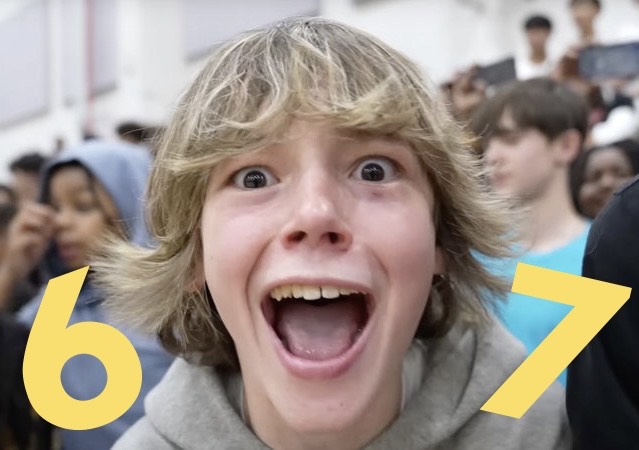
A silence fills the room as the tired students listen to the teacher explain the assignments for the day. “I will group you together in groups of three.” She says, and then begins counting the groups. Pointing at each group, “One, two, three, four, five…” There’s a noticeable pause in the air, and she continues: “Six, seven.”
The class erupts with a booming “SIX SEVEN!!!” and roaring laughter. Complete chaos ensues as the students lose their composure. The absolute pinnacle of comedy has just unfolded before them: the two numbers now infamous to teachers nationwide, six, seven.
Where did this set of numbers gain their notoriety, though? What does it mean? Of course, people have been saying the numbers 6 and 7 for centuries, but why has it suddenly become a joke among the youth?
The trend started with a song by Skrilla, called “Doot Doot,” where he says “67” to represent his neighborhood in Chicago, 67th street. Users on TikTok then used the song in highlight edits of Lámelo Ball, a 6’7″ basketball player.
The TikTok edits quickly became a popular trend. At first, only a small group of people would point it out or say it outside of TikTok. They became known as 67 kids. As the joke about these 67 kids became widespread, the use of 67 outside of TikTok grew into an ironic joke almost everyone used.
67’s popularity grew, and after the first time the joke started to die, a video clip of a someone who fit the “67 kid” description, yelled “67!!!” at a basketball game went viral. The video resulted in another layer of irony being cast over the joke, allowing it to continue for a little longer.
The joke once again started to go dry, until a new trend. TikTok edits of the kid at the basketball game, now known notoriously as The 67 Kid, started to go viral again. They portrayed The 67 Kid as an entity with expansive power, similar to Galactus from the Marvel Universe, calling it SCP-67.
As the meaning of 67 strays further from it’s origin, getting stupider and stupider, the joke gets funnier and funnier, leading us to where we are today, where you hear the joke like, six or seven times a day.
The joke has come full circle, as the joke originated making fun of annoying “67 kids,” and now all the youth have become those kids themselves, and teachers and parents have come to say it to make fun of those kids.
This trend shows the influence of memes from social media as they go viral, causing the humor of Gen-Z to change to silly, nonsensical, obscure things, instead of the traditional joke format of the past. This form of humor requires them to keep up with the current trends as they come out to communicate with their peers, but it also builds a sense of community among those who all understand whatever niche internet reference is being made.